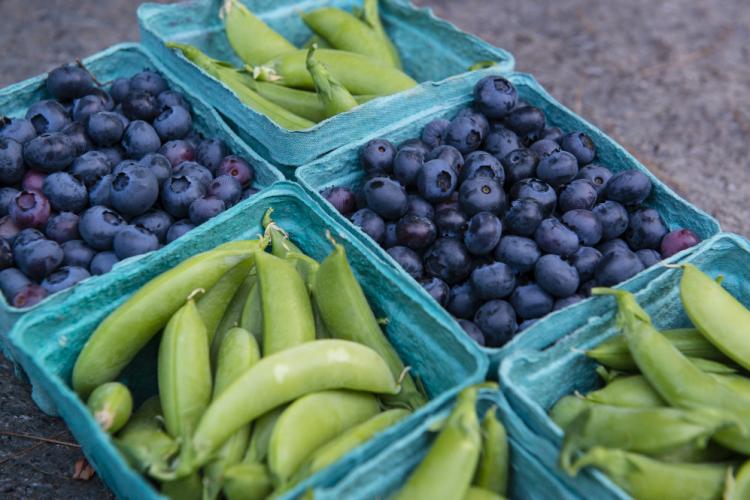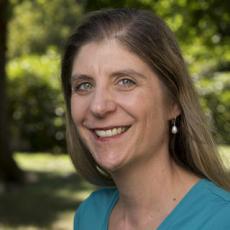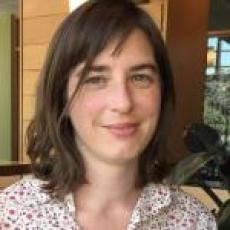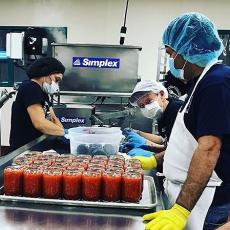In Our Spotlight
Food Transformation
What is a value-added food product, anyway? According to the USDA, “Value-added products are raw agricultural products that have been modified or enhanced to have a higher market value and/or a longer shelf life.” Think of fruits made into jams or pies, wheat turned into flour, or tomatoes and peppers becoming salsa.
For those who have an idea for such products but need guidance, there are now resources at the University of Massachusetts Amherst in the duo of Amanda Kinchla, extension associate professor, food sciences and Jill Fitzsimmons, research assistant professor, resource economics. They have teamed up to roll out a new program that offers entrepreneurs a hand up when moving into a new value-added foods (VAF) market.
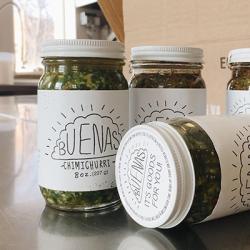 When a farmer looks for ways to diversify or boost income, creating value-added products while using direct marketing can be a useful strategy. The public has the chance to develop a new appreciation for a farming enterprise that can then extend that farm’s season and even open up new markets.
When a farmer looks for ways to diversify or boost income, creating value-added products while using direct marketing can be a useful strategy. The public has the chance to develop a new appreciation for a farming enterprise that can then extend that farm’s season and even open up new markets.
It is not too difficult to change fruit into jam or cucumbers into pickles in your own kitchen. But what if you want to sell these foods beyond your dining room? Surprisingly, there are no standard regulations across the country. Rather, many regional variations exist, making it complex for new businesses who want to get their product to market. They can find themselves bogged down and confused while sorting out which sets of rules apply to them.
Kinchla and Fitzsimmons are committed to streamlining this situation.
UMass Leading the Country in Value-Added Investment
Since 2016, these two have teamed up to merge their separate, but related, interests in order to help others extend food value. Recently, they launched a new website: UMass Extension Value-Added Foods to help people interested in creating and selling food products. Their team provides both research and educational programs for farmers, food entrepreneurs, processors, food hubs and shared-use processing facilities, and other food-based groups in Massachusetts and across the country.
“I don’t think anyone else in the country has done this," Kinchla remarks.
UMass Amherst is the first institution in the country to invest in this subject on a regional scale, and then to relay the applicability of steps for the rest of the nation. Kinchla and Fitzsimmons have worked through a lot of the bigger framing questions and have a clear and well-defined view of how the many pieces and parts fit together. Kinchla remarks, with not a little pride, “I don’t think anyone else in the country has done this. We are offering a way to put useful information about value–added foods out there, and our website is already working to make it happen.”
Together, they have created a body of research, compiling five years of data on the meeting of food science and resource economics. Kinchla and Fitzsimmons have emerged from their research with the beginnings of a standard blueprint of regulations for the whole country. Their team focuses on the intersection of profitability, food safety, and food quality to support the development of sustainable markets. They aim to balance consumer demand for regional attributes with safe, high-quality food products.
In doing so, they found an opportunity to meet growing demands for local and regional foods (and increase farm sector profitability) by supporting and developing new markets for value-added products. Recent investments in regional food processing facilities is providing ways for farmers, food entrepreneurs, processors, food hubs and shared-used processing facilities to process fresh produce for later sales.
In addition, the UMass VAF team recognizes the challenges for the average entrepreneur in accessing market-research data, data important to understand profitability and to navigate the critical food safety regulations. Kinchla and Fitzsimmons plan to address these challenges to help improve profitability for local food-based businesses.
Why the Keen Interest?
Amanda Kinchla worked in the food industry for over 15 years before joining UMass Amherst. When she started to pioneer a new program in food science, she was surprised to realize how limited the resources were for new start-up entrepreneurs. Kinchla began gathering materials on licensing, capital investments, markets for products and more.
She began to understand that while she brought a wealth of experience to the table in food science, something was missing. Kinchla sought a partner who could pick up the market research, consumer demand and willingness of consumers to pay--all critical components of a successful business and important elements of product design. Fitzsimmons was a perfect match. She has been devoted to documenting equitable economic systems in food production, looking at marketing issues and supply chains on a regional scale. “People are surrounded by good intentions but do not always have the drive to carry it through,” she said.
The UMass VAF Team is more than just two Amherst-based professors. It has grown into a multi-disciplinary group that includes economists and food scientists from around the region. Partners include: Northeast Center to Advance Food Safety (NECAFS), Western Mass. Food Processing Center (WMFPC) in Greenfield, Commonwealth Kitchen in Dorchester, Massachusetts Department of Agricultural Resources (MDAR), Communities Involved in Sustaining Agriculture (CISA), and other like-minded organizations all helping to provide assistance to develop emerging markets.
“Buy Local Food” has become a mantra for many. However, the terms local and value-added have become intertwined when defining the merits of food. As they tackle ways to standardize an emerging value-added food industry, Kinchla and Fitzsimmons aim to create unambiguous terms with clear distinctions going forward.
Many Ways to Add Value
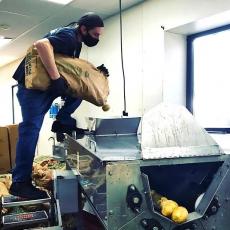 While freezing fresh produce has become more widespread, the UMass team is also working with acidified or canned products, dairy processing, and sustainable local seafood. You’ll find more on all of these at their VAF website.
While freezing fresh produce has become more widespread, the UMass team is also working with acidified or canned products, dairy processing, and sustainable local seafood. You’ll find more on all of these at their VAF website.
Kinchla and Fitzsimmons have a well-honed sense of emerging technologies. They are frequently engaged in conversations around the country on issues including cottage food laws, incubator businesses, and food-producer entities, topics complicated by regional and state-by-state variations in rules and regulations, many of which are tied to safety and quality. Fitzsimmons emphasized that “…the economic cost of a product is directly tied to the quality and safety of it. You can‘t separate the value from processing or producing a safe product. Anytime you change physical state, you are changing risk and you need to be sure quality holds firm throughout the supply chain.”
Thanks to multiple external sources of funding from NESARE, Food Safety USDA/NIFA and others, Kinchla and Fitzsimmons can pursue nationwide collaborations. They currently are in conversations with rural economic food groups in Massachusetts, West Virginia, and Arkansas. Together they are working on determining market potential for value-added foods. While it seems that the jelly and jam market is tapped out, it is not yet clear where the next surge of buying power will arise.
Although they say you should never put your eggs in one basket… it may not apply here. Those abundant research baskets of Kinchla and Fitzsimmons look like a fair bet for the future of value-added foods.
For general question related towards value-added foods, send message to: valueaddedemail@umass.edu
